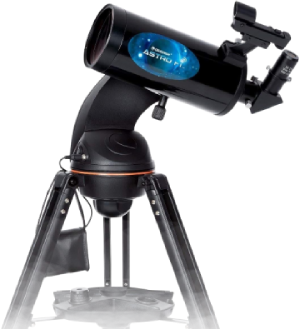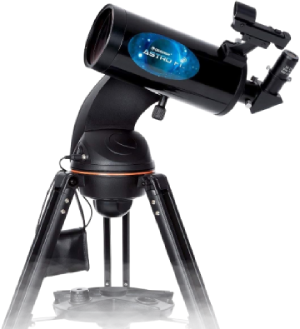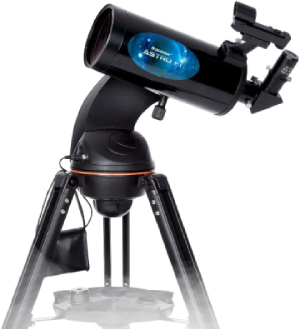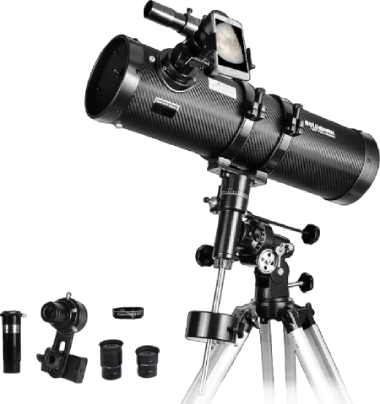If you're a beginner fascinated by the stars and seeking a telescope that blends ease of use, tech convenience, and solid optics, the Celestron Astro Fi 102 Maksutov-Cassegrain Telescope might be exactly what you need.

This telescope allows you to see Jupiter's cloud bands, Saturn's rings, the Moon’s craters, and even bright deep-sky objects like the Orion Nebula and Andromeda Galaxy under dark skies. Designed for novices and casual stargazers, it’s a WiFi-enabled, app-controlled telescope that removes the intimidation factor from astronomy.
Whether you're buying your first telescope or gifting it to a curious teen, the Astro Fi 102 offers a smart entry into the world of amateur astronomy.
Key Features & Why It Matters for Beginners
Smartphone/Tablet Control
No need for manual alignment or confusing buttons—the Astro Fi 102 connects to your smartphone or tablet via the Celestron SkyPortal app. The app not only aligns the scope automatically but also helps you find celestial objects based on your location.
🔍 102mm Maksutov-Cassegrain Optics
The Maksutov design offers sharp, high-contrast images and is perfect for planetary observation. With 102mm (4-inch) aperture, it strikes a balance between portability and performance.
🔭 Motorized GoTo Mount
This fully motorized mount automatically locates and tracks over 120,000 celestial objects, removing the guesswork for new users. You just tap on what you want to see in the app—Jupiter, Saturn, a nebula—and the telescope points to it.
🎒 Compact and Lightweight
Weighing under 16 lbs, the Astro Fi 102 is easy to carry, store, and set up, making it ideal for kids, students, or travelers.
💸 Budget-Friendly with High Value
Compared to more complex or manually aligned telescopes, the Astro Fi 102 offers exceptional value for its smart features, priced comfortably under $500 in most stores.
Ready to Start Stargazing with Celestron Astro Fi 102?
The Celestron Astro Fi 102 is a game-changer for beginners—smart, intuitive, and powerful. If you're ready to explore the universe with minimal hassle, this telescope is your best starting point.
👉 Check the Best Price and Ready to Heal
Related Read
Best Telescopes to See Jupiter and Saturn in 2025:A Complete Buying Guide for Planetary Enthusiasts
Buying Guide: What to Consider Before Purchasing
One of the standout features of the Celestron Astro Fi 102 is its Maksutov-Cassegrain optical design, which is particularly well-suited for beginners. This design offers sharp, high-contrast views while requiring minimal maintenance. Its sealed tube helps keep out dust and prevents optical misalignment over time—perfect for anyone who wants clarity without fuss.When it comes to the mount, the telescope uses a computerized alt-azimuth (Alt-Az) system, rather than a more complex equatorial mount. This makes it significantly easier for beginners to use. The built-in GoTo system allows you to locate and track celestial objects with a simple tap on your smartphone or tablet, taking the guesswork out of stargazing.
It’s also important to consider what’s included in the box. Most starter bundles come with two eyepieces (typically 25mm for wide views and 10mm for closer zoom), a red dot finderscope to help locate objects, a sturdy tripod, and free access to the SkyPortal app, which serves as your digital stargazing guide.
As for powering your sessions, the Astro Fi 102 runs on 8 AA batteries. While this is convenient, many users find it more reliable to use a portable power bank, especially during extended nights under the stars.
In terms of who this telescope is ideal for, it’s best suited to tech-savvy teens and adults, newcomers to astronomy, and families looking for a fun educational activity. Its smart controls and low learning curve make it a truly beginner-friendly telescope.


